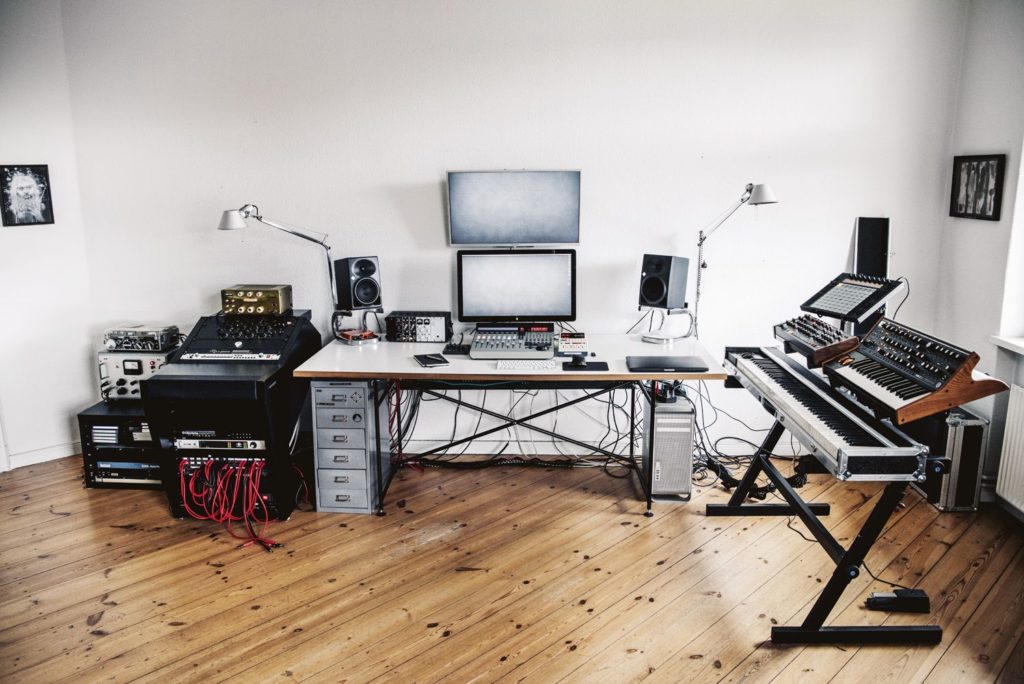Digital nomads and those who work remotely have found that designing your workspace at home has been a crucial task.
This is why Office Home Studio has set up everything you need to know about going through the details of your home studio.
However, we will go over some important tips on better organizing and planning your space at home where you can remain productive with whatever work you need to do.
The Revolution and the Renovation
The rise of home studios started the revolution of building ones, especially when the pandemic hit and the concept of office spaces were further pushed to a more fluid state.
Globally, a lot of work transitioned to remote spaces, which drove people to build their workspaces within their resting place.
Creating boundaries mentally and physically is important as a home studio means that there will be overlaps between your work and your time to unwind and rest.
There are just things that a Zoom background can’t hide, which greatly impacts your productivity.
Many designers worldwide have even considered home studios as essential parts of a house, when a few decades ago, this would be a talk about houses having pools or gaming rooms.
The renovations done to ensure that work can be done at home speaks volumes about the need to be detail-oriented and considerate about how space is maximized.
If a workspace is essential to your place of rest, you need to invest in certain things that can ensure that your work remains undisturbed and conducive to productivity and learning.
Additionally, your workspace shouldn’t hinder you from still having enough time and space to unwind and spend with family and loved ones.
Some have even gone the extra mile to build their working sheds at home as home studios to ensure that there are still clear boundaries between work and home.
With this, we will talk about some practical tips you can consider whether you’re going to build a home studio shed or simply work with the current space you have at home as a working area.

1. The Proper Setup for Work
Two of the essential tools you’ll need for remote work are an excellent connection to the Internet and a powerful PC, Mac, or laptop for the actual job.
Look into great providers for your area to ensure that your work is seamless in terms of connectivity and power.
For virtual meetings, you also need to consider being more presentable.
There are many things that Google Meet and Zoom filters and backgrounds just cannot hide and can’t improve, as well.
At the minimum, this includes proper lighting, a noise-reduction headset with an optimal microphone, and a great chair that supports your back for long hours on it.
Your workspace can be more productive with less clutter to think about. Getting some desk organizers and cable organizers can help declutter the area and ensure lesser distractions.
2. Design that Works for Home
Working from home doesn’t mean that your studio design can’t work for the home. Because you still want your home to look and feel like one, you might want to look into several design ideas for a workspace that suits the design of your furniture and room at home.
Organizers, desks, and chairs that still follow your house’s aesthetics will not just camouflage your workspace as part of the house, but you can also easily feel that you’re back at home when you pause to take short breaks from work.
Blending your home studio to the overall appeal of your home can also help those you live with to adapt to the integration you’ve done with the space.
They’ll be reminded that your workspace is part of the home, too.

3. Location and Orientation
If your home is shared with others, setting your home studio’s location within the house should consider avoiding common areas as much as possible.
If you wish to build a home studio as a separate shed in the yard, connectivity with the power and the Internet should be the utmost priority.
Setting up a separate room or part of the house separate from the rest of it also helps sound-proof the area so that your work can be free from any distraction.
Organizing your cables is of great help if working with a smaller space. It creates more space for you to work with, but it is also a safety precaution if you have small pets or children at home.
4. Natural Elements at Play
Natural light has a way of boosting the energy of any indoor space. Set up your home in a room with a window so it can still gain access to natural light during the day.
Just make sure that direct heat won’t affect your gadgets, so checking in where the light comes in should give you room to work with and plan where to situate your studio properly.
You can also make it more in touch with home by setting up potted plants or indoor succulents to create a room for breathing.
There are always bigger strengths when working remotely, especially in terms of time and money saved from the daily commute.
You can use these to continue to improve your home studio by investing in small upgrades one part at a time.
It is possible to feel still and be at home even if you work within its confines with great planning and excellent design research.






